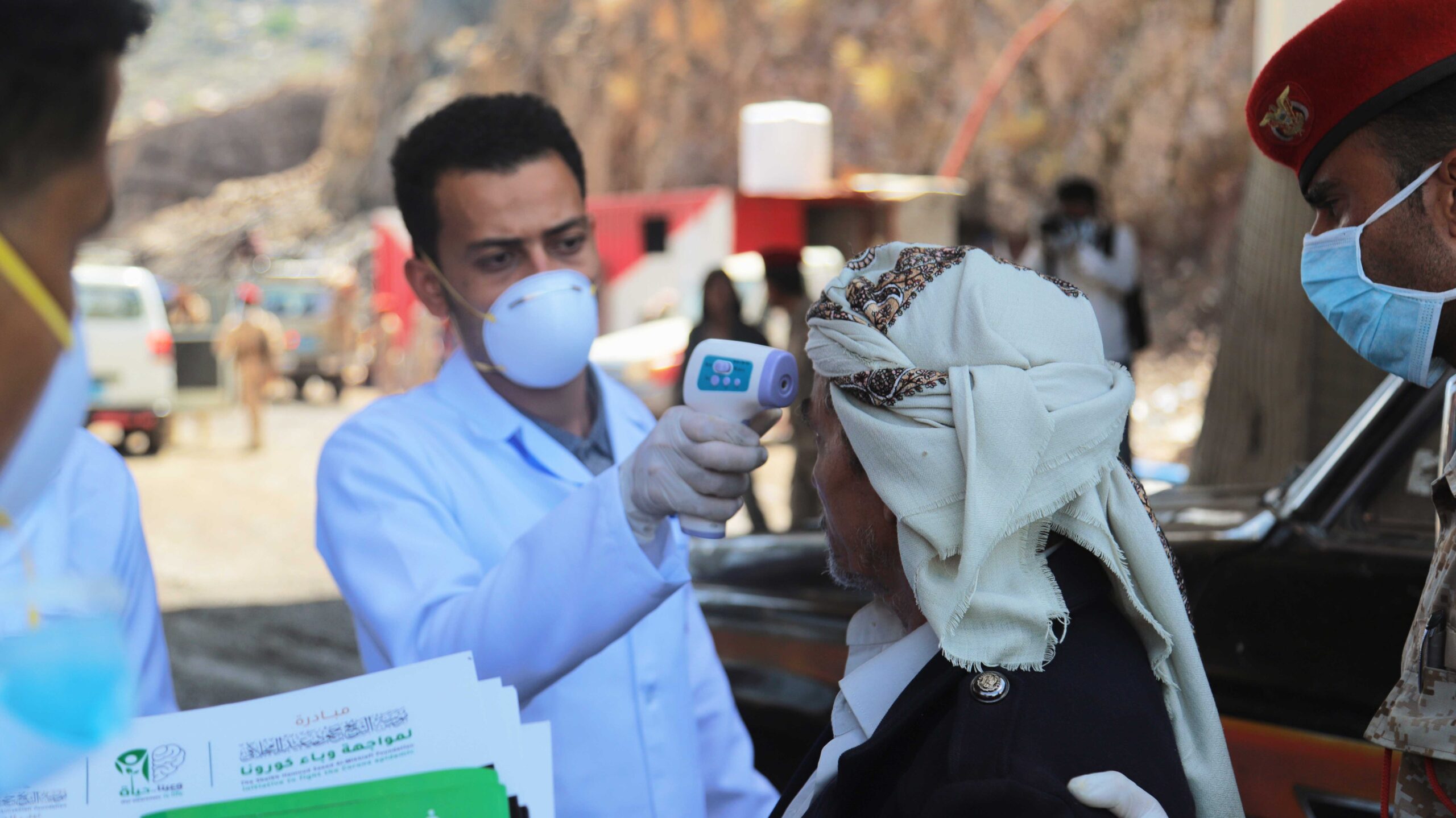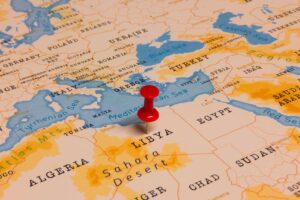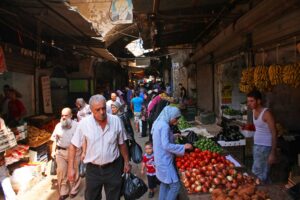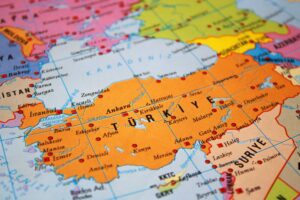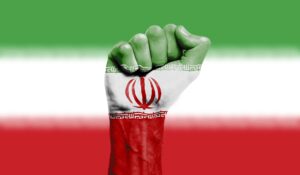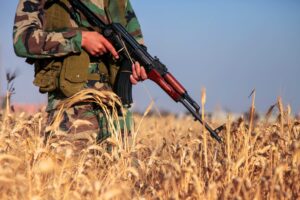Introduction
In 2019, the UN had reported that almost 80% of Yemen’s population was at risk of starvation and disease, and almost 78% lived in poverty.[1] In addition to deadly (albeit preventable) epidemics of cholera, measles and diphtheria, the Saudi-imposed blockade of food aid has led to a man-made famine that has killed more than 85,000 children under the age of 5. These facts and figures do not justify the situation on ground and a deeper look at the sectarian conflict in Yemen is necessary at a time when the United Nations has, once again, reported that community transmission of the coronavirus could serve a death blow to “30 of the 41 UN-supported programmes in Yemen”[2] that would have to close due to a severe lack of funds. In a country as devastated as Yemen – where its civilians are constantly forced to migrate for shelter and scavenge for food – social distancing is impossible and hand sanitizers are a luxury. This pandemic could, indeed, obliterate the remaining societal fabric of the country.
The Conflict in Yemen
The war in Yemen is both a civil war and a proxy war, depending on how one interprets the political and sectarian affiliations of its belligerents. Although the two warring groups clashed in the aftermath of the Arab Spring in 2011, the conflict only flared up in January 2015 when the rebels, colloquially termed as Houthis, captured the presidential palace in Yemen’s capital, Sana’a. The Yemeni government, led by President Abd Rabbu Mansour Hadi, was forced to resign by the insurgents who demanded equality and better standards of living, but eventually returned to the capital after securing a coalition that included Saudi Arabia, Kuwait, Egypt, UAE and Jordan.
The Houthi opposition, originally created in 1992 in resistance to the then-despotic President Ali Abdullah Salah and named after a prosecuted Shia Zaydi tribe led by Hussein al Houthi, was hypocritically commanded by the experienced Salah himself, until his assassination in 2017. Since the beginning of hostilities in 2015, the Houthis have been militarily and logistically assisted by the Islamic Republic of Iran. Iran’s involvement is largely due to the Houthis’ shared adherence to Shia Islam, and strategically in order to retain a stronghold in the Gulf, especially the crucial Red Sea port of Al Hudaydah. Even though the Houthis are substantially supported by Iran (regionally and internationally), they are not liable to venerate the Ayatollah or even obey President Rouhani’s orders since they are a homegrown movement, comprised not only of Shias but also of a significant population “spanning religious, geographic and political spaces and hierarchies allied”[3] against the Saudi coalition. Previously, they have been known to operate independently, carrying out attacks against Tehran’s will because Iran’s agenda is solely and evidently aimed at sowing discord at Saudi Arabia’s doorstep. Furthermore, Tehran’s funding of the Houthi movement pales in comparison to the Arab coalition[4] as the latter’s bombing campaign has yielded unimaginable casualties each time Yemen has been struck, proving to the international community that Saudi Arabia will not shirk from war crimes where its national security is concerned.
Due to the aforementioned sectarian components of the conflict, Yemen has often been considered another pawn in the hands of Shi’a Iran and Sunni Saudi Arabia; a Cold War of sorts in the Middle East. The sectarian aspect of the conflict is often used as a smokescreen to conceal the geo-political intentions of the actors involved. Warring sides have been blinded by notions of victory and retribution, mindless of the carnage that has engulfed the peninsula. Yemen was the poorest nation of the region before its war: now it is ravaged, starved, diseased, in addition to being poverty-stricken. Peace talks have not reaped results, the United States has closed its borders to Yemenis, and those fleeing war are stranded in Libyan detention centres instead of rebuilding lives in Europe.
The United States of America, France and the United Kingdom are culpable of war crimes in Yemen since these countries began providing intelligence support and signing billion-dollar defence deals with Saudi Arabia in order to support its campaign in the country. War crimes that have been committed by these weapons have elicited massive protests in the West – but covert deals continue, and so do the deaths and displacement of innocent civilians. Western-manufactured ammunition has fallen into the hands of terror groups, namely AQAP (Al Qaeda in the Arabian Peninsula) and Ansar al-Sharia (offshoot of AQAP), that have taken advantage of the political vacuum and established strongholds in various enclaves across the country.[5]
Preventable Epidemics and Man-Made Famine
In a report compiled by the OCHA, “a Yemeni child under the age of 5 dies every ten minutes of preventable causes.”[6] More than 1 million Yemenis had been diagnosed with Cholera between 2016 and 2019, 16 million had zero access to food or clean water, and 22 million – of a total 29 million people – are in dire need of humanitarian assistance.[7] The transportation facilities that were available for aid agencies have been blocked by the Saudi-led coalition in order to starve the Houthi rebels, but inadvertently or not, this blockade has brutally affected 5 million Yemenis who have been struck by famine. Everything from water to humanitarian aid has been weaponised through the course of this brutal conflict.

Since starvation of its people did not facilitate victories for either side, death by preventable diseases will definitely wipe out the populace. Despite three major cholera outbreaks since 2016 which were left untreated because of the wrecked healthcare system, neither the Houthi governorates nor the Yemeni government has devised any plan to ensure certain standards of sanitation in the country. The spread of diseases has become an intrinsic element of the blame-game being played between the combatants, and international organisations have been restricted from treating individuals unless ransom is paid to the warring camps, in cash or kind. Furthermore, most outbreaks of cholera and dengue have occurred due to a lack of sanitary infrastructure and medicine supplies, the prevalence of crowded communities residing in tents and use of unhygienic, communal facilities to wash and clean. 5 million Yemenis have been displaced and forced to live in tents, scavenge for food from overflowing garbage dumps and drink water from sources polluted by shrapnel and debris.

7-year old Amal Hussein, whose pictures amplified the tragedy of Yemen, succumbed to malnutrition in 2018
Credit: NYT
The Impact of the Coronavirus
The coronavirus pandemic has taken the world by storm with fatalities increasing exponentially by the day.
Yemen is a country devoid of any comprehensive state machinery, lacking medical facilities and awareness regarding the virus. Although one of the more recent countries to report its first case, the lack of testing and underreporting are the only reasons for this piece of news. For all internally displaced persons (IDP) who have been forced to migrate from terror-struck regions, social distancing is an incomprehensible norm. A country that has to import food aid for survival is certainly far from manufacturing PPE kits, masks or even soaps. Starvation has resulted in malnutrition amongst Yemeni children, hence increasing their susceptibility to coronavirus. Low immunity, unhygienic and cramped living conditions, and lack of a medical infrastructure pose dire threats to the country’s infected population. According to MSF, people are delaying their visits to the hospital, hence increasing risks of transmission and dying in a short span of time even after treatment is being given.[8] As operations and donations from across the globe have ceased, international humanitarian organisations battling both bombing raids and virus transmission on frontlines are facing major financial issues. According to a WHO report, “there are only 18 operational COVID-19 isolation units, 520 ICUs and 154 ventilators” in all of Yemen.[9] These are unbelievably shocking statistics for a country of 29 million people that has been sacrificed at the altar of tyranny, ruthless domination and mercilessly selfish pursuits.
UN appeals for funding and cessation of war are five years too late for a country that has been precariously balancing on the brink of recession, poverty and rampant destruction. One cannot expect war survivors to fear a virus, especially those who have borne the brunt of annual epidemics. Soon enough Yemen could cease to exist, and the only positive outcome would be the end of hostilities led by a government that has nobody left to govern.
[1] “Humanitarian Crisis in Yemen Remains the Worst in the World, Warns UN | | UN News.” United Nations, United Nations, 14 Feb. 2019, news.un.org/en/story/2019/02/1032811.
[2] Nebehay, Stephanie. “Cash-Strapped Aid Projects Face Closure in Yemen as COVID-19 Spreads – UN.” Reuters, Thomson Reuters, 12 June 2020, in.reuters.com/article/yemen-un/cash-strapped-aid-projects-face-closure-in-yemen-as-covid-19-spreads-un-idINKBN23J1GU.
[3] Al-Hamdani, Sama’a. “Understanding the Houthi Faction in Yemen.” Lawfare Institute, Brookings, 7 Apr. 2019, www.lawfareblog.com/understanding-houthi-faction-yemen.
[4] Durac Lecturer, Vincent. “Yemen’s Houthis – Why They’re Not Simply a Proxy of Iran.” The Conversation, 19 Sept. 2019, theconversation.com/yemens-houthis-and-why-theyre-not-simply-a-proxy-of-iran-123708.
[5] Elbagir, Nima, et al. “US Arms Sold to Saudi Arabia and UAE End up in Wrong Hands.” CNN, Cable News Network, 2019, edition.cnn.com/interactive/2019/02/middleeast/yemen-lost-us-arms/.
[6] O’Brien, Stephen. “Yemen: A Child under the Age of Five Dies Every 10 Minutes of Preventable Causes – UN Humanitarian Chief.” OCHA, 1 Mar. 2019, www.unocha.org/es/story/yemen-child-under-age-five-dies-every-10-minutes-preventable-causes-un-humanitarian-chief.
[7] Talmazan, Yuliya. “Yemen Crisis: Three Stats That Reveal the Scale of World’s Worst Humanitarian Crisis.” NBCNews.com, NBCUniversal News Group, 28 Oct. 2018, www.nbcnews.com/news/world/yemen-crisis-three-stats-reveal-scale-world-s-worst-humanitarian-n923741.
[8] 2020, Project Update2 June. “A Lot of People Die Quickly of COVID-19 in Yemen: MSF.” Médecins Sans Frontières (MSF) International, 10 June 2020, www.msf.org/lot-people-die-quickly-covid-19-yemen.
[9] Yaakoubi, Aziz El. “Exclusive: As COVID-19 Cases in Yemen Surge, Some Sources See Undercounting.” Reuters, Thomson Reuters, 13 May 2020, in.reuters.com/article/health-coronavirus-yemen-outbreak-exclus/exclusive-as-covid-19-cases-in-yemen-surge-some-sources-see-undercounting-idINKBN22P0OQ.


